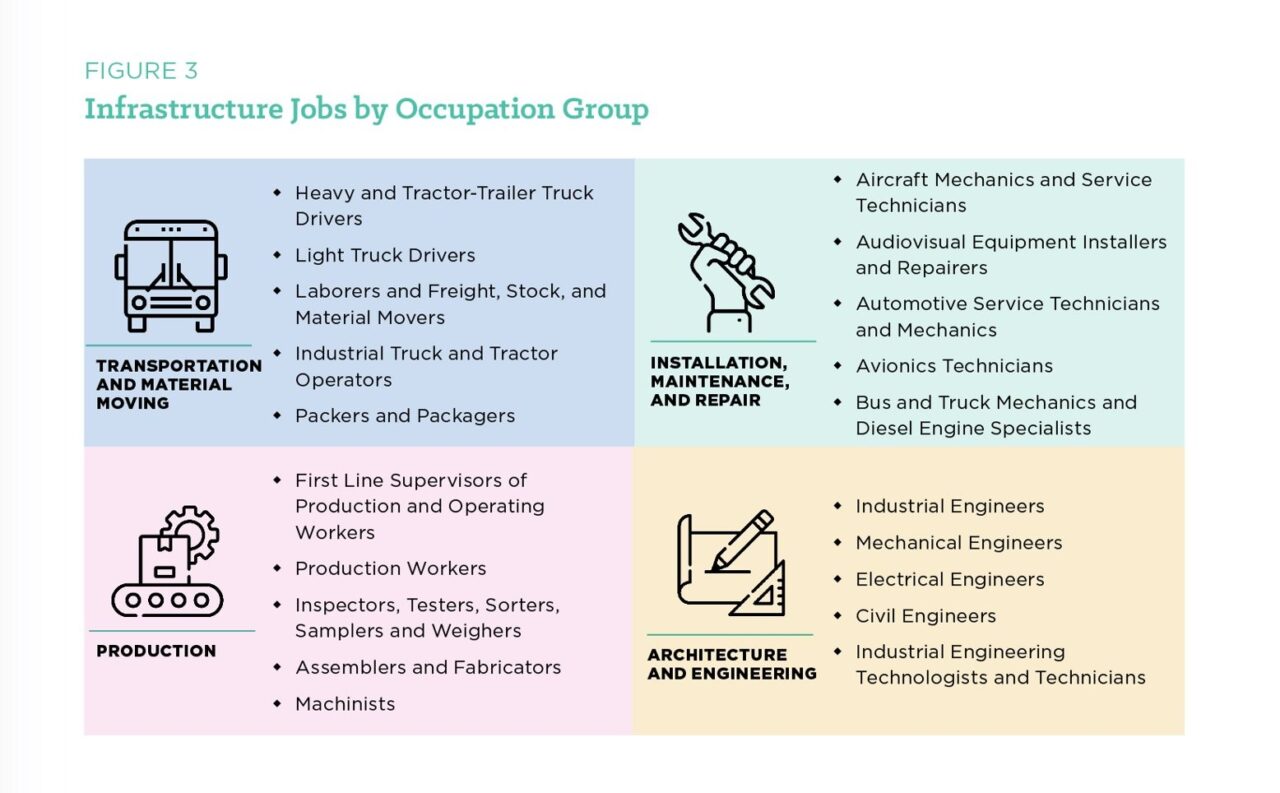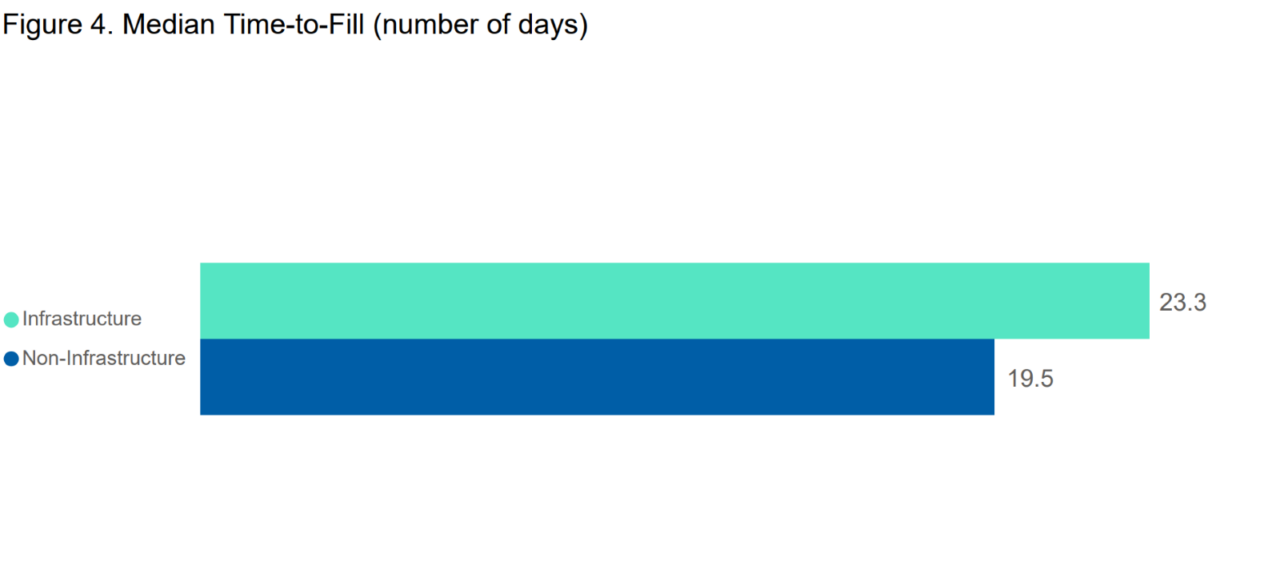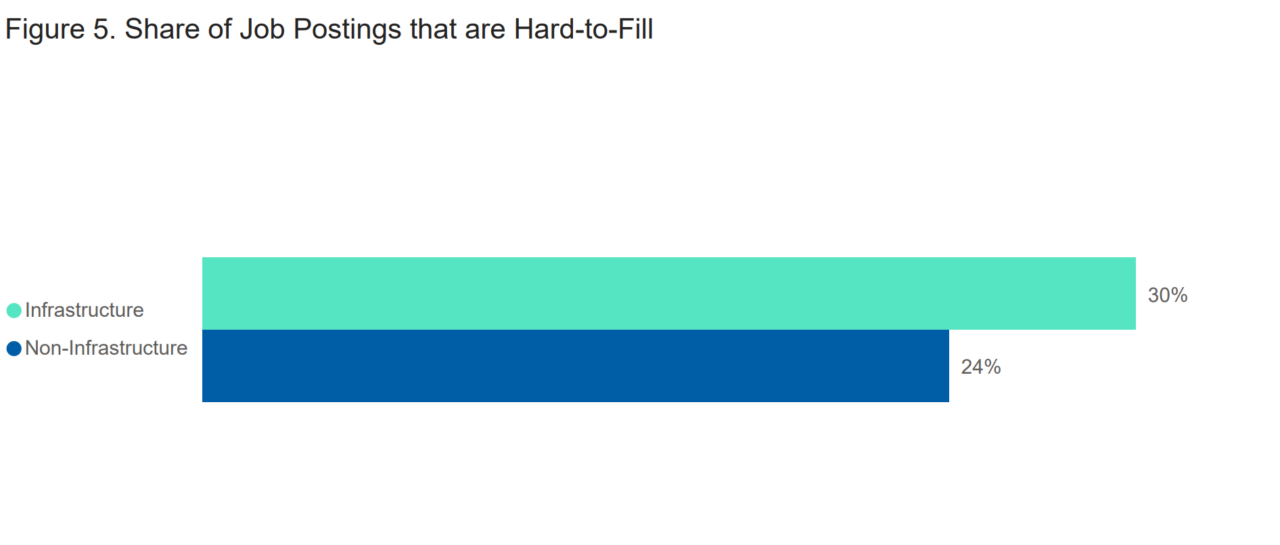As Congress returns to Washington and continues forward with the legislative process on both the Infrastructure Investment and Jobs Act (IIJA) and the budget reconciliation bill, local leaders are focused on how an infrastructure investment of this scale will be implemented to address the critical road, bridge, water system and broadband project needs in their communities.
The IIJA, which includes $550 billion in new federal investments in America’s infrastructure, is a critical investment that is needed in cities large and small, urban and rural. Congress must also consider the workforce reality on the ground in our communities and who will build and maintain these physical infrastructure assets.
This week, NLC released a new report, Hard-to-Fill Infrastructure Jobs: A Challenge to Building Our Future and confirms this workforce imperative. Based on a proprietary dataset of the open and close date of all job postings in the United States from January–April 2021, we find that jobs related to maintaining, building and operating infrastructure take longer to fill than non-infrastructure jobs, and that a larger share of infrastructure jobs takes a very long time to fill compared with those same occupations in non-infrastructure-related fields.

The time it takes to fill a position is a commonly used metric to understand how well the labor market is suited to in-demand industries. When a position fills quickly, it generally indicates that the workforce of the area has the skills needed to do the job and is otherwise suited to the industry. The opposite is also true. In the current job market infrastructure jobs take longer to fill than other types of jobs, a dynamic that has huge negative implications for the success of historic federal investments in our nation’s infrastructure.

Additionally, three in 10 infrastructure jobs take much longer to fill than expected. Let’s put this in perspective. The Georgetown University Center on Education and the Workforce estimated that the current infrastructure plan will create or save 15 million jobs over the next 10 years. Based on our analysis, if we do nothing to improve labor market outcomes for infrastructure-related jobs, we can anticipate that as a nation we will struggle to fill at least 4.5 million jobs.

Labor shortages, workforce systems not aligned with industry demand, insufficient access to career pathways and significant retirements of skilled and semi-skilled workers are affecting infrastructure jobs acutely. Unfortunately, these trends have also collided with disinvestment in workforce training overall, and specifically in career and technical education, as well as less education to youth about the benefits of a career in skilled trades and manufacturing.
New investments in workforce development are critical to ensuring the long-term success of the IIJA. Local leaders are already driving practical, local solutions to address workforce needs, partnering with community colleges, career and technical high schools and other programs to expand access to training and skills development. But they need a strong federal partner to help us invest at-scale in the training and education programs necessary to connect more local residents to high-quality jobs.
Take Action
As a local leader, share your story…and local data…with your members of Congress. Here’s how:
- SEND a letter to encourage Congress to pass a budget that includes city priorities, including workforce and infrastructure.
- SHARE your story with NLC about how infrastructure funding will impact your community and workers in your community.
- EXPLORE infrastructure jobs in your congressional district with NLC’s new interactive data tool and provide this information to your members of Congress.
Your voice is needed. If Congress fails to act, not investing in our infrastructure workforce will result in increased costs and delays for infrastructure projects, potentially jeopardizing the quality of the work done, and significant missed opportunities to strengthen communities.







